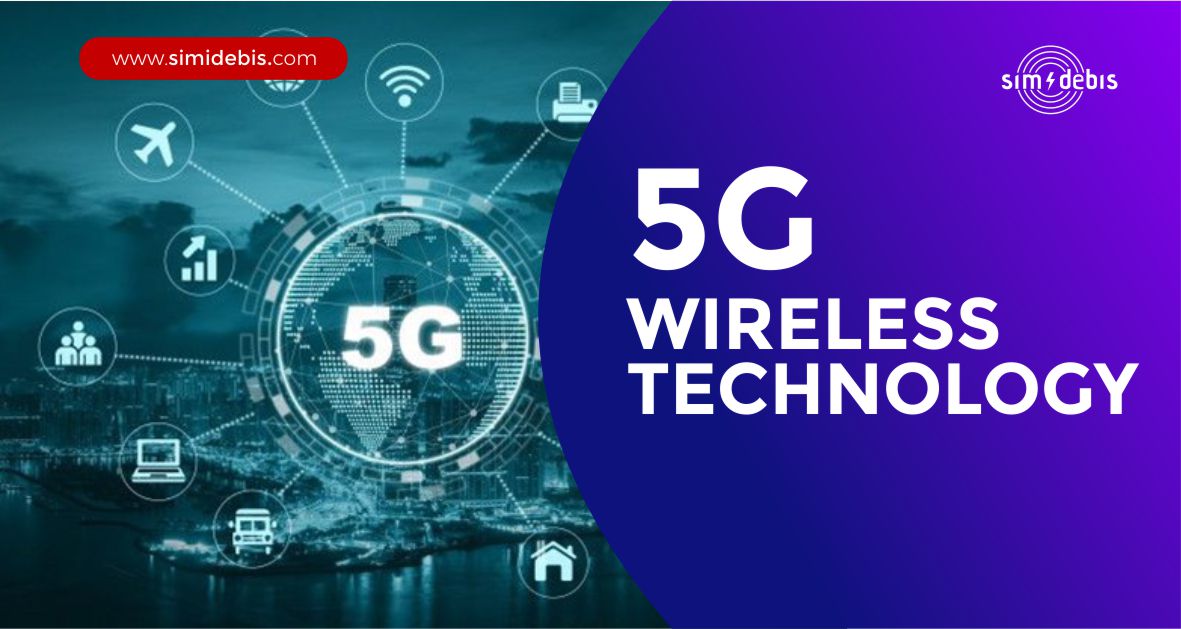What is 5G?
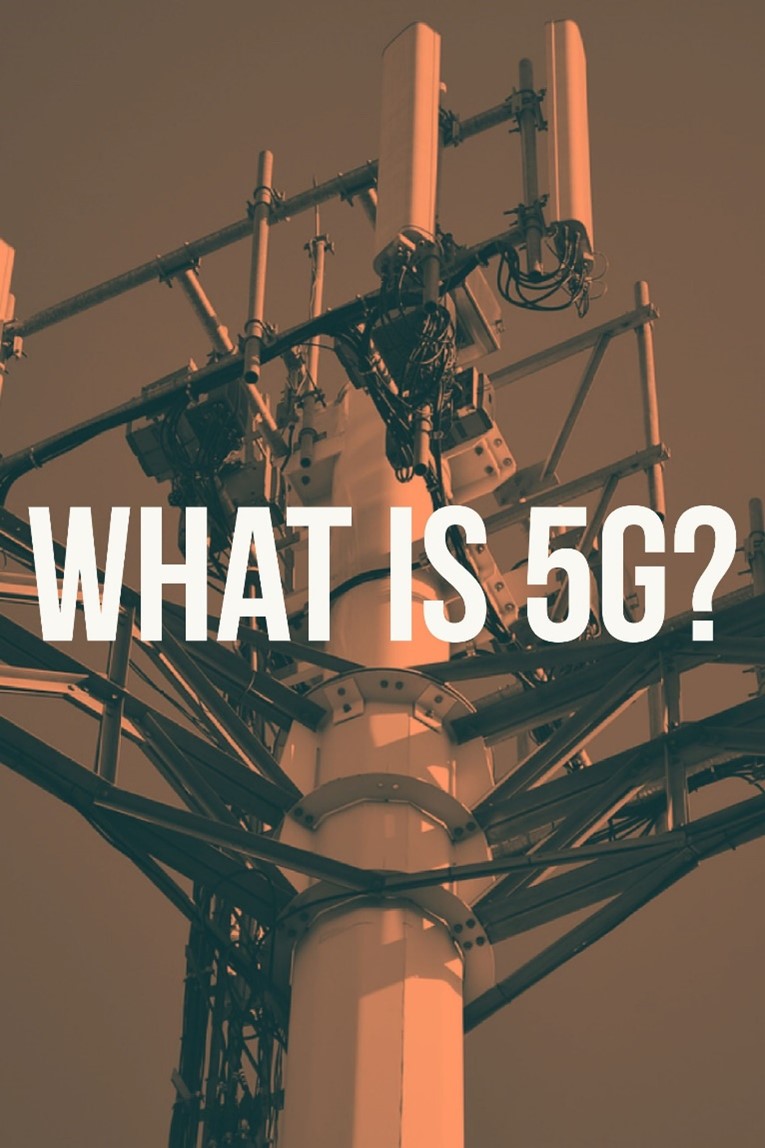
Fifth-generation wireless (5G) is the latest iteration of cellular technology, engineered to greatly increase the speed and responsiveness of wireless networks. 5G is the fifth generation of mobile networks, following on from previous generations; 2G, 3G and 4G networks. 5G enables a new kind of network that is designed to connect virtually everyone and everything together including machines, objects, and devices.
5G wireless technology is meant to deliver higher multi-Gbps peak data speeds, ultra-low latency, more reliability, massive network capacity, increased availability, and a more uniform user experience to more users. Higher performance and improved efficiency empower new user experiences and connects new industries. With 5G, data transmitted over wireless broadband connections can travel at multi-gigabit speeds, with potential peak speeds as high as 20 gigabits per second (Gbps) by some estimates. With high speeds, superior reliability and negligible latency, 5G will expand the mobile ecosystem into new realms. 5G will impact every industry, making safer transportation, remote healthcare, precision agriculture, digitized logistics — and more — a reality
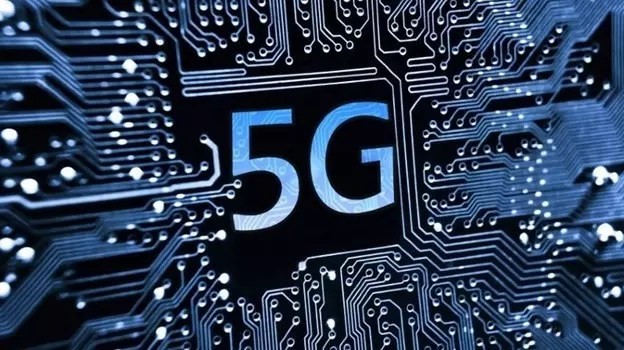
How Does 5G Work?
Wireless communications systems use radio frequencies (also known as spectrum) to carry information through the air. Wireless networks are composed of cell sites divided into sectors that send data through radio waves. Fourth-generation (4G) Long-Term Evolution (LTE) wireless technology provides the foundation for 5G. Unlike 4G, which requires large, high-power cell towers to radiate signals over longer distances, in 5G, the network service area is divided into small geographical areas called cells. All the 5G wireless devices in a cell communicate by radio waves with a local antenna and low power automated transceiver (transmitter and receiver) in the cell. The local antennas are connected with the telephone network and the Internet by a high-bandwidth optical fiber or wireless backhaul connection. 5G uses higher radio frequencies that are less cluttered. This allows for it to carry more information at a much faster rate.
5G operates on 3 different spectrum bands:
- Low-band spectrum – Expect peak speeds up to 100Mbps
- mid-band spectrum – Expect peak speeds up to 1Gbps
- high-band spectrum – Expect peak speeds up to 10Gbps
These higher bands are called ‘millimeter waves’ (mm waves). While higher bands are faster at carrying information, there can be problems with sending over large distances. They are easily blocked by physical objects such as trees and buildings. In order to circumvent this challenge, 5G will utilize multiple input and output antennae to boost signals and capacity across the wireless network. 5G can support up to a million devices per square kilometer, while 4G supports only up to 100,000 devices per square kilometer. The technology will also use smaller transmitters. Placed on buildings and street furniture, as opposed to using single stand-alone masts. Current estimates say that 5G will be able to support up to 1,000 more devices per metre than 4G.
Key Benefits of 5G Wireless Network:
- High & increased peak bit rate (Up to 10Gbps connections to endpoints in the field)
- Larger data volume per unit area (i.e. high system spectral efficiency)
- High capacity to allow more devices connectivity concurrently and instantaneously (100 percent coverage)
- More bandwidth
- Lower battery consumption
- Better connectivity irrespective of the geographic region where you are in
- A larger number of supporting devices (10 to 100x number of connected devices)
- Lower cost of infrastructural development
- Higher reliability of the communications (One millisecond end-to-end round trip delay)
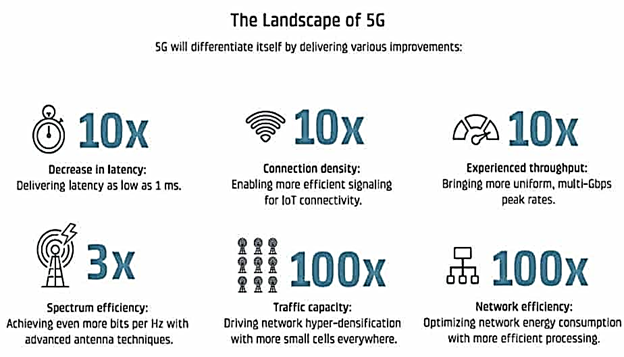
Areas 5G can be used?
5G is engineered to bring about a rapid and expansive growth in many fields and industries. Some of the areas where 5G is being used are:
- Internet of Things – IoT
- Health care
- Public safety and infrastructure
- Autonomous vehicles
- Manufacturing
- Entertainment/Gaming
- Supply-chain management
- Energy
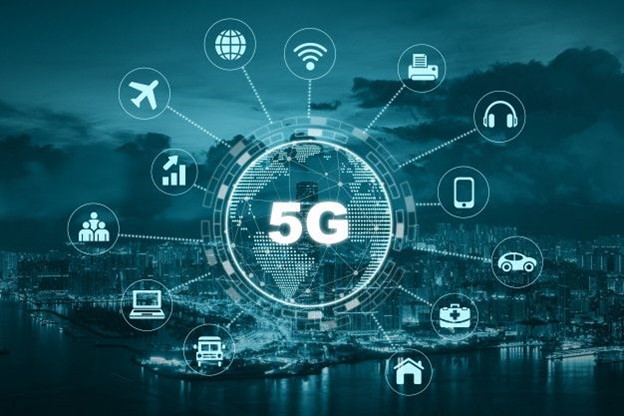
5G Deployment
South Korea was the first country to implement 5G in April 2019. Following which Verizon launched its 5G services in the United States. Philippines was the first country in Southeast Asia to start 5G network after Globe Telecom commercially launched its 5G data plans to customers in June 2019. China, the United Kingdom, Germany, and the United States have also implemented the 5G network. Taking a global view on the 5G deployment across different countries and the cities with 5G technology.
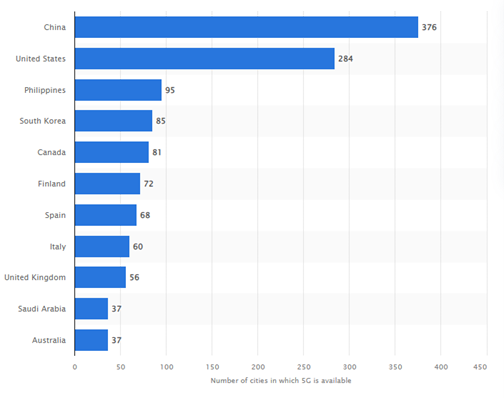
5G in Africa
Some countries like South Africa, Kenya, Senegal, and Nigeria have made impressive progress in 5G deployment. A tracking of major 5G deployment plans in Africa showed that less than 10 countries are making moves to deploy 5G technology.
Nigeria
- Regulator: Nigerian Communication Commission (NCC)
- Spectrum status: Spectrum auctioned in 2021. MTN, Mafab Communications emerge, winners, to pay $273.6m each
- Key Spectrum: 3.5GHz
Following a successful auction of the 3.5GHz spectrum auction, which will herald the launch of 5G network, Nigeria will more than likely roll out the commercialization of the 5G spectrum by the fourth quarter of 2022. Nigeria will therefore join Kenya and South Africa as the only three countries to have deployed commercial 5G services on the continent. Nigeria is depending on this superfast mobile technology to drive growth in the nation’s economy. The NCC also fixed a reserved price of $197.4 million or N75 billion for the spectrum. The government plans to conclude the 5G spectrum assignment by following a “phased approach” as its deployment plan. The three-thronged strategy includes a Non-Stand Alone (NSA) approach for the early stage, a hybrid approach for the mid-term, and a Stand-Alone approach for the long term. An NSA approach “will involve the deployment of 5G equipment on some existing sites, supported by densified networks of small cells”, while “the mid-term stage (2021 – 2025) will involve a hybrid approach with new-build 5G sites added to the small cell networks”. Depending on demand and ROI, this hybrid scenario may be seen by some as a long-term solution. “The long-term stage (post-2025) should see Stand Alone networks deployed and will require the largest infrastructure investment,” – The Africa Report.
Mauritius
- Regulator: ICT Authority (ICTA)
- Spectrum Status: 5G spectrum licenses issued to three mobile operators – MyT Mobile, Emtel and Mahanagar Telecom – in June 2021
- Key Spectrum: 2.6GHz and 3.5GHz
- Commercial Launch Prospects: MyT Mobile launched 5G in July 2021; Others have not launch
Mauritius telecoms regulator, ICT Authority (ICTA) in June 2021 issued 5G licenses to three mobile operators. However, Mauritius did not auction the licenses but invited three mobile operators MyT Mobile, Emtel and Mahanagar Telecom to apply for radio spectrum that will be used to deploy 5G networks A total of 300MHz of radio spectrum in the 2.6GHz and 3.5GHz bands was made available by the regulator. Each operator was asked to specify its preferred frequency blocks and to state their commitments to network coverage.
The operators were also asked to disclose their timeframes for achieving specific percentages of network coverage for mainland Mauritius as well as the outer islands. One month after issuing the licenses, MyT Mobile launched its 5G services in Ebene, Trianon, Bagatelle, and Reduit regions of the country. The Chief Executive Officer (CEO) of Mauritius Telecom, Sherry Singh, stated that the operator is among the first to launch 5G in Africa.
Uganda
- Regulator: Ugandan Communication Commission (UCC)
- Spectrum status: Review of spectrum band in readiness of 5G
- Key Spectrum: None yet
- Commercial Launch Prospects: MTN Uganda conducted 5G trial
The UCC in consultation with the industry is reviewing spectrum band plans in preparation for 5G. The Ugandan government is working in collaboration with other stakeholders in the industry to establish the first technology test bed in the country. The former Executive Director of the Uganda Communication Commission (UCC), Godfrey Mutabazi, had said the commission was working to ensure that there is an appropriate infrastructure that supports 5G. MTN Uganda in partnership with Chinese firm, ZTE last year January showcased a 5G standalone (SA) network under the 60 MHz spectrum bandwidth with an actual rate of more than 1.494 Gbps.
Kenya
- Regulator: Communications Authority of Kenya (UCC)
- Spectrum Status: 5G spectrum will be auctioned by August 2022
- Key Spectrum: 3.5GHz
- Commercial Launch Prospects: Commercial launch of 5G planned for December 2022
The Communications Authority of Kenya is planning to issue 5G licenses to mobile network operators by December 2022. According to a new draft policy outlining the 5G implementation road map, the regulator is planning to commence the 5G trial networks in 3.5 giga-Hertz (GHz) by December. The regulator is also planning a 5G summit in January 2022 and the implementation of 5G pilot projects is expected to commence in May. Safaricom already started 5G trial after unveiling 15 sites, with plans to increase the number to 200 by the end of 2021 in preparation for a commercial rollout. Airtel also announced an upgrade of more than 600 sites with an aim of making them 5G ready
South Africa
- Regulator: Independent Communications Authority of South Africa (ICASA)
- Spectrum Status: Temporary 5G licenses issued to operators till November 30, 2021
- Key Spectrum: 2.6GHz and 3.5GHz
- Commercial Launch Prospects: MTN, Vodacom and Rain have deployed non-standalone and commercial-standalone 5G networks
The Independent Communications Authority of South Africa (ICASA) in April 2021 released the emergency spectrum to meet the spike in broadband services demand due to the COVID-19 pandemic. The regulator said the high-demand spectrum was released in order to ease network congestion, maintain a good quality of broadband services, and enable licensees to lower the cost of access to consumers. The ICASA had in the past four months engaged some operators in a legal battle over its spectrum auction process. The parties agreed to an out-of-court settlement but so far, a comprehensive settlement has not been achieved. Analysts believe this ongoing legal battle will delay spectrum licensing for 5G till 2022. However, Vodacom and MTN used the temporary spectrums to deploy 5G services but as from December, the two operators will not have temporary spectrum to use. Rain South Africa, a mobile broadband provider of data services, was allocated 30 MHz in the 2.6 GHz band. The operator deployed 5G data services to its customers in major centers in Cape Town and Johannesburg. It also signed a roaming agreement with Vodacom.
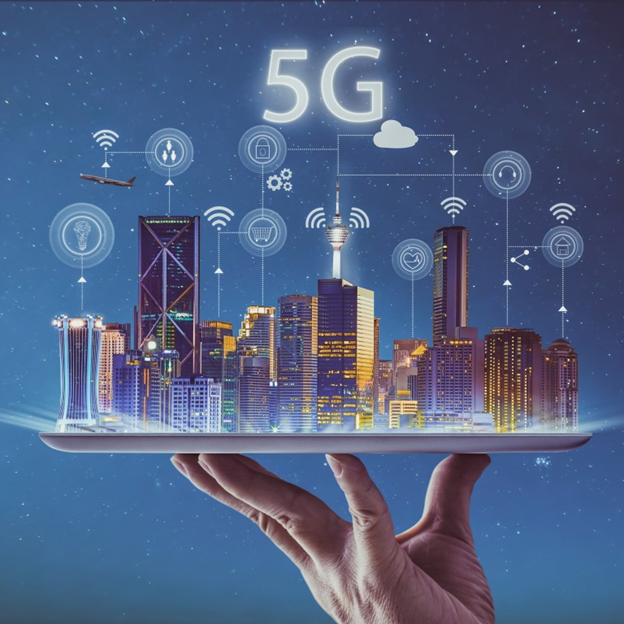
Conclusion
5G Wireless Technology is more intelligent technology, which will interconnect the entire world without limits. It is designed to provide unbelievable and extraordinary data capabilities, unhindered call volumes, and vast data broadcast. Our world would have universal and uninterrupted access to information, communication, and entertainment that will open a new dimension to our lives and will change our lifestyle meaningfully. Moreover, governments and regulators can use this technology as an opportunity for good governance and can create healthier environments, which will definitely encourage continuing investment in 5G, the next-generation technology.
